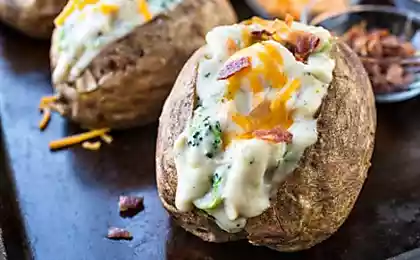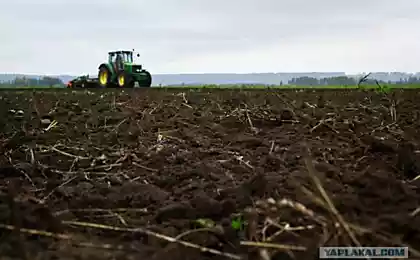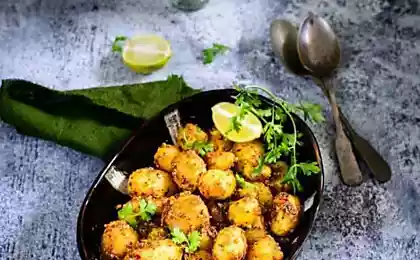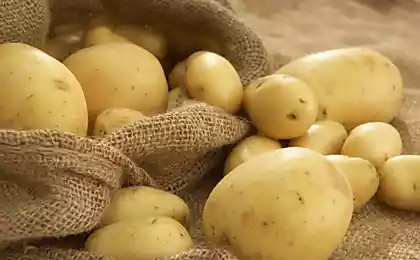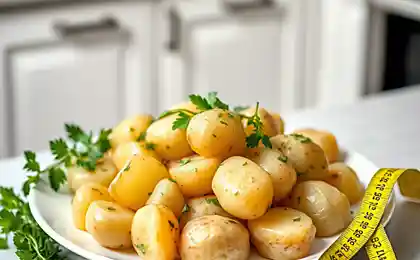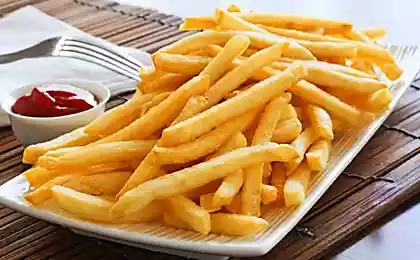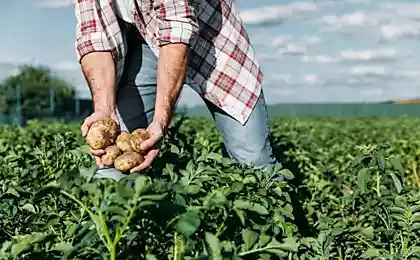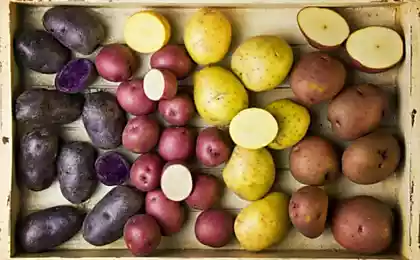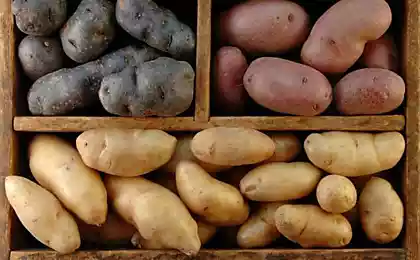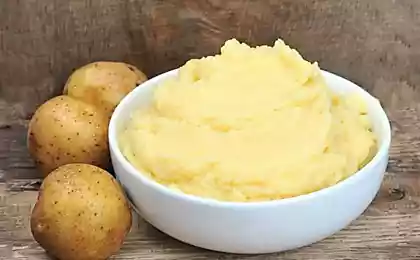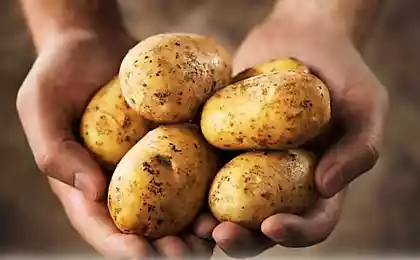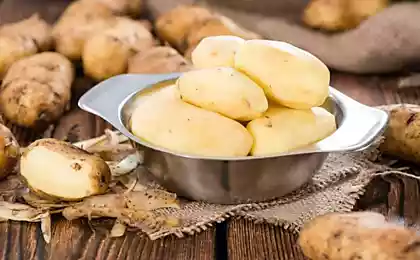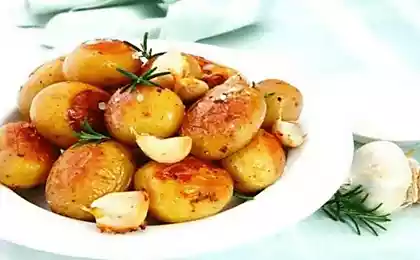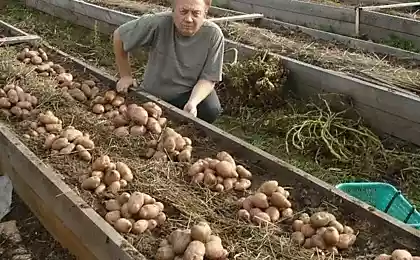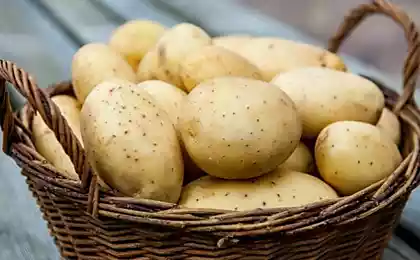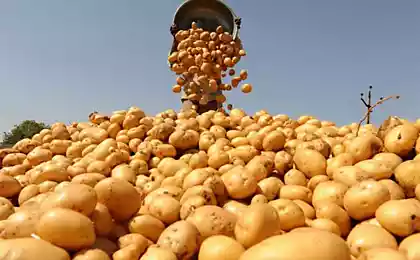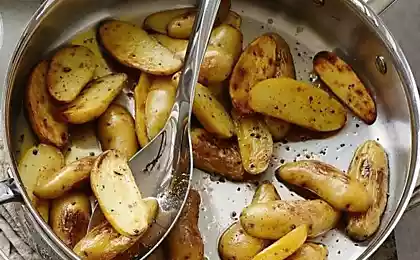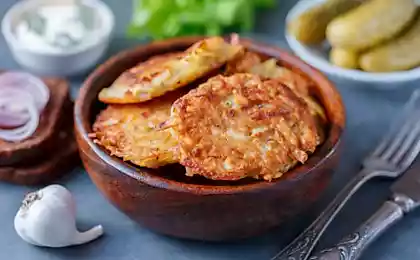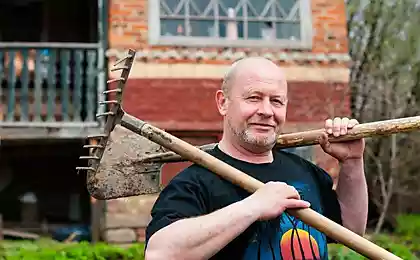147
Potato cutting tricks
Potatoes need to be poached, probably even those who have never planted them. How do you do that? Turns out there are some little tricks.
When do you start swelling? There are many different answers to this question in the literature. The reference point in all recommendations is the height of the shoots, but the figures call different: from 14 to 20 cm.
I myself prefer to start squashing as early as possible. At the same time, I do not focus on centimeters, but on signals of a completely irrational “device” – intuition. Over time, probably every gardener has such a flair: just look at the plants and understand what they need now.
In fact, early tilling replaces both weeding and the recommended loosening of the soil. In our unstable climate, it also serves as a protection of shoots from returning frosts. Potatoes are traditionally planted in early May. And in the second half of the month - just in time for the appearance of shoots - usually come cold. Hidden by a layer of soil, sprouts calmly tolerate even a short-term drop in temperature slightly below zero (sometimes this happens). . )
More than once noticed: after souring, potatoes seem to accelerate growth. If the weather is favorable, the bushes grow and strengthen literally before our eyes. Therefore, I never laziness to once again walk with a hoe along the rows, loosening the ground and holding it to the crests.
How many times do I do it? Classic - 2 shingles: the second is carried out 2-3 weeks after the first, before the potato blooms. But if you start this event early enough, two times is not enough. I prefer to focus not on abstract “norms”, but on the needs of real plants.
If the grown bushes fall apart, or the nest is formed not along the crest, but grows across, wide, and tubers begin to peek out of the ground, greening in the light, it is necessary to steep, whatever they say.
I’ve had potatoes 3 or 4 times a season. Some will say it is too laborious... I don't know, I think weeding is much more tedious. And then walked through the field with a hood - and the earth is loose, and there are no weeds, and potato bushes are cheerful and beautiful, smooth) And then thanks for a great harvest.
What time is preferable for swelling? At the time of chipping potatoes, you can often see gardeners with hoes in the fields in the middle of a hot summer day. And this is not good for health, and the plant is not useful. While covering, we still disturb him, we touch the shoots, inadvertently and disturb the underground part. In the heat, all this becomes critical, and plants can bog. Therefore, in hot weather, potatoes should be soaked in the morning or in the evening, when the activity of the sun decreases.
It’s best to do it after the rain. The benefit is double. First, moist soil does not crumble from the crest. Secondly, adding moisture-rich soil to the base of the stems, we stimulate the formation of additional stolons (underground shoots on which potato tubers are formed) - and this is an increase in the yield.
But in theory. In practice, it also happens that it is high time to rain, but there are no rains. Naturally, we will not postpone an important matter in anticipation of a favorable weather forecast, but if the soil is completely dry, we will water it before finishing.
Do you always use squashing? Inventive gardeners and inquisitive scientists are everywhere looking for alternative solutions, and cropping potatoes is no exception. First, they came up with planting methods that make this procedure unnecessary (for example, landing under a black nonwoven material). Secondly, they have proven by experience that unburdening works no worse.
What's the point? Covering potatoes, we solve several tasks at once: loosen the soil; create an additional volume of it in which tubers are formed; push the plant to form stolons in the lower (covered with soil) part of the stems; improve the lighting of plants, collecting them “in a bunch” and not allowing them to shade each other; get rid of weeds. But it turns out that the same problems can be solved in exactly the opposite way.
Unburdening is a method in which the growing top, instead of lifting up, is spread on the ground. The soil (options: grass, straw, other materials) is poured on top, leaving only the tops of the shoots on the surface. As they grow, everything repeats itself. In this way, my friends grew potatoes under the grass (for lack of straw) - the result was satisfied. However, more space will be needed than with the traditional method of cultivation.
Source: www.7dach.ru
When do you start swelling? There are many different answers to this question in the literature. The reference point in all recommendations is the height of the shoots, but the figures call different: from 14 to 20 cm.
I myself prefer to start squashing as early as possible. At the same time, I do not focus on centimeters, but on signals of a completely irrational “device” – intuition. Over time, probably every gardener has such a flair: just look at the plants and understand what they need now.
In fact, early tilling replaces both weeding and the recommended loosening of the soil. In our unstable climate, it also serves as a protection of shoots from returning frosts. Potatoes are traditionally planted in early May. And in the second half of the month - just in time for the appearance of shoots - usually come cold. Hidden by a layer of soil, sprouts calmly tolerate even a short-term drop in temperature slightly below zero (sometimes this happens). . )
More than once noticed: after souring, potatoes seem to accelerate growth. If the weather is favorable, the bushes grow and strengthen literally before our eyes. Therefore, I never laziness to once again walk with a hoe along the rows, loosening the ground and holding it to the crests.
How many times do I do it? Classic - 2 shingles: the second is carried out 2-3 weeks after the first, before the potato blooms. But if you start this event early enough, two times is not enough. I prefer to focus not on abstract “norms”, but on the needs of real plants.
If the grown bushes fall apart, or the nest is formed not along the crest, but grows across, wide, and tubers begin to peek out of the ground, greening in the light, it is necessary to steep, whatever they say.
I’ve had potatoes 3 or 4 times a season. Some will say it is too laborious... I don't know, I think weeding is much more tedious. And then walked through the field with a hood - and the earth is loose, and there are no weeds, and potato bushes are cheerful and beautiful, smooth) And then thanks for a great harvest.
What time is preferable for swelling? At the time of chipping potatoes, you can often see gardeners with hoes in the fields in the middle of a hot summer day. And this is not good for health, and the plant is not useful. While covering, we still disturb him, we touch the shoots, inadvertently and disturb the underground part. In the heat, all this becomes critical, and plants can bog. Therefore, in hot weather, potatoes should be soaked in the morning or in the evening, when the activity of the sun decreases.
It’s best to do it after the rain. The benefit is double. First, moist soil does not crumble from the crest. Secondly, adding moisture-rich soil to the base of the stems, we stimulate the formation of additional stolons (underground shoots on which potato tubers are formed) - and this is an increase in the yield.
But in theory. In practice, it also happens that it is high time to rain, but there are no rains. Naturally, we will not postpone an important matter in anticipation of a favorable weather forecast, but if the soil is completely dry, we will water it before finishing.
Do you always use squashing? Inventive gardeners and inquisitive scientists are everywhere looking for alternative solutions, and cropping potatoes is no exception. First, they came up with planting methods that make this procedure unnecessary (for example, landing under a black nonwoven material). Secondly, they have proven by experience that unburdening works no worse.
What's the point? Covering potatoes, we solve several tasks at once: loosen the soil; create an additional volume of it in which tubers are formed; push the plant to form stolons in the lower (covered with soil) part of the stems; improve the lighting of plants, collecting them “in a bunch” and not allowing them to shade each other; get rid of weeds. But it turns out that the same problems can be solved in exactly the opposite way.
Unburdening is a method in which the growing top, instead of lifting up, is spread on the ground. The soil (options: grass, straw, other materials) is poured on top, leaving only the tops of the shoots on the surface. As they grow, everything repeats itself. In this way, my friends grew potatoes under the grass (for lack of straw) - the result was satisfied. However, more space will be needed than with the traditional method of cultivation.
Source: www.7dach.ru
Fruits and vegetables neglected by Europe are being saved from landfill by a young company
In Portugal was born a baby dwarf hippopotamus
